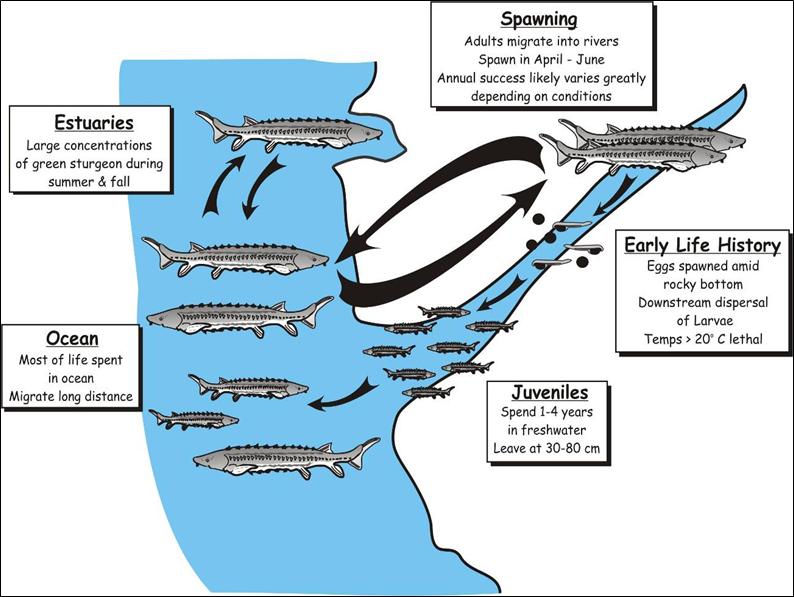What is life history in terms of zoology?
1 Answer
An organism's life history refers to the series of changes an organism goes through such as infancy, the juvenile period, adulthood, sexual maturity, and so forth.
Explanation:
An organism's life history in terms of biology/ecology refers to the individual's patterns of development and how those stages affect physiology and behavior. An organism's life history starts at conception or birth all the way to the organism's death.
The study of life history encompasses age at first birth for females, age when sexual maturity is reached, number of offspring, length of lactation period (if applicable), length of time the organism is reproductive, and etc.

Life history illustration of sturgeon.
For example, a brief description of the life history of a male gorilla would include infancy, when the animal is dependent on its mother for milk, a juvenile period when the animal is no longer riding solely on its mother's back and is exploring the world more, then a stage when the male gorilla is a "blackback" or no longer a juvenile but not finished growing.
A blackback may be sexually active and may leave its natal group (the group it was born in). Blackbacks have not reached full size and are subordinate to silverback gorillas. Around age 12 the blackback will have reached full size and its hair will have silvered. At the silverback stage, this individual will then seek to dominate a group of females and blackbacks and reproduce with those females.
Studies of life history help us better understand the tradeoffs an organism may have to make in order to survive but also reproduce.
To learn more, read here .

